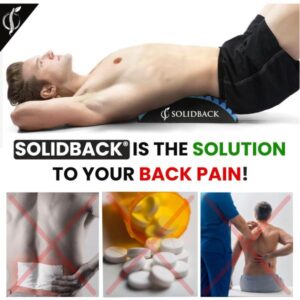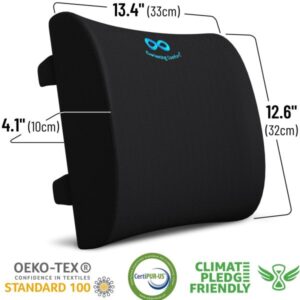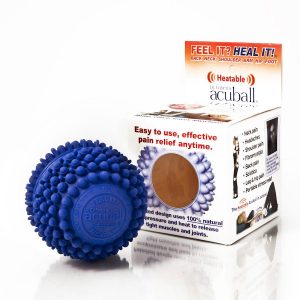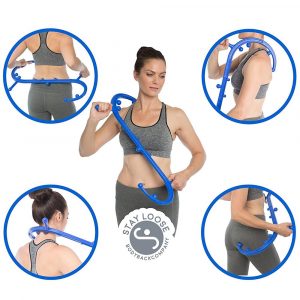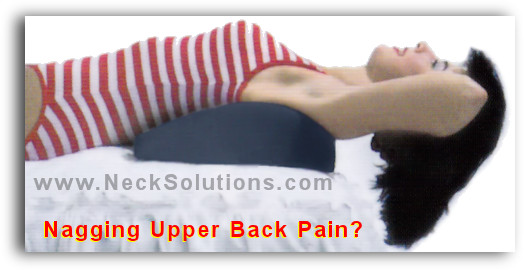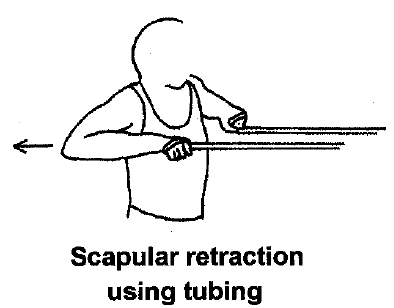Upper Back Pain Between Shoulder Blades May Be Helped By Posture Correction Exercises And Stretches
One of the main causes of upper back pain is poor neck posture which ultimately pushes the area between the shoulder blades out as the head goes forward. Over time, this wears on the joints and discs of the spine.
Some neck exercises, described previously, are good for upper back pain and between the shoulder blades with causes related to poor posture habits. While the neck is conditioned to the normal position the shoulders are rotated outward to help exercise the muscles of the upper back and correct the rounded shoulder position.
The causes of pain in the upper back are varied so it is important to be examined by a doctor. A common cause without injury is related to poor posture at home and at work. Muscles and ligaments become over stretched and weak. Over a period of time, the joints become stressed and this causes a degenerative type of arthritis similar to that seen in the neck region with stiffness caused by restricted motion and irritation of pain sensitive structures like the nerves and spinal discs.
In addition to the neck exercises which need to be performed, another one of the exercises I like to is performed like stretches and is also good for the neck.
 From the starting position sitting on your legs with either the toes on the floor or the top of the feet on the floor. Slowly lean forward and let your hands touch the floor. Carefully inch your way forward with your hands pulling and keep your head looking forward. You can crawl with your fingertips but your lower body remains in the same starting position. As you move forward you should feel your upper back stretching. Tilt your head up as if looking at the ceiling while pulling forward on the carpet with your fingers and in some instances you may feel a release in the area between the shoulders. Hold the position for 10 – 20 seconds then reverse the process and return to a full starting position.
From the starting position sitting on your legs with either the toes on the floor or the top of the feet on the floor. Slowly lean forward and let your hands touch the floor. Carefully inch your way forward with your hands pulling and keep your head looking forward. You can crawl with your fingertips but your lower body remains in the same starting position. As you move forward you should feel your upper back stretching. Tilt your head up as if looking at the ceiling while pulling forward on the carpet with your fingers and in some instances you may feel a release in the area between the shoulders. Hold the position for 10 – 20 seconds then reverse the process and return to a full starting position.
The first time you try the upper back exercises you should proceed slowly and stop if you feel and sharp or radiating pain. Take your time. One repetition should take a minute or two. To start do 1 or 2 repetitions or to release and do more as you progress. As with the neck exercises, the upper back exercises require quality of motion and relaxation instead of quantity. One good one is better than twenty bad ones.
If you have pain in your upper back and you paint ceilings or look up all day then these exercises and stretches are not for you. You may need the help of orthotic supports like the Neck Guard to ease postural strain. But if you sit slumped over a desk or do work where you constantly bend your head down then they may work for you.
One of my favorite upper back stretches is to lie on your back and stretch your arms on the floor up over your head. This works good with a firm pillow placed under the area between the shoulder blades and across the upper back. You can try rolling up a large towel and some are using large body balls.
As one of the major causes, posture correction using some of the methods described here to target the area between the shoulder blades with stretches and exercises is a good way to begin relief. A strengthening program for the neck and shoulders is a great way to correct and rehabilitate the problem.
- A 2021 study in the International Journal of Occupational Safety and Ergonomics found a high prevalence of scapular instability among office workers with neck and scapular complaints. It was also associated with muscle tightness and abnormal posture and muscle tightness indicating proper exercises and working posture is warranted.
The imbalance of postural muscles is often responsible. Forward head posture and rounded shoulders form a typical reaction to these imbalances, often termed “upper crossed syndrome“, a main therapeutic approach for postural restoration.
Focusing on weak upper back muscles like the rhomboids with scapular retractions as indicated a above is helpful, as is stretching weak pectoralis muscles. A main focus when addressing postural related upper back pain is the neck.
- A 2019 study in the Journal of Biomechanics found that neck pain can cause a local instability in the thoracic spine. The instability, especially when accompanied by weak and/or over stretched muscles, can make the upper back vulnerable to muscle, tendon and ligament injuries.
Yoga Stretches For Upper Back Pain
A condition called hyperkyphosis, or hunchback is commonly seen and progresses with age. This affects up to 40% of older adults. It is associated with increased falls and fracture risk, reduced health related quality of life, impaired physical function, and is a predictor of all cause mortality in women. Thus attention to postural restoration in this area can be a great preventive as well as corrective endeavor.
- A 2021 study in BMC Geriatrics indicates this condition termed the “new geriatric syndrome” causes an anterior displacement of the center of gravity, which affects physical function characteristics and balance, and in turn negatively impacts physical function. In the study, older adults with low physical function who are transitioning to frailty and with hyperkyphosis may safely improve physical function after a 3 month targeted exercise and posture training intervention.
Upper Back Disc Herniation
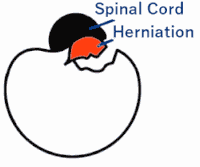 Thoracic spine disc herniations are rare and even more rare in the upper thoracic spine, about one in one million according to Surgical Neurolology. Most are found in the lower part, below T8. Conservative treatment similar to those found in the neck or lower back is recommended.
Thoracic spine disc herniations are rare and even more rare in the upper thoracic spine, about one in one million according to Surgical Neurolology. Most are found in the lower part, below T8. Conservative treatment similar to those found in the neck or lower back is recommended.
So, herniations in this are quite rare and other musculoskeletal conditions and/or postural considerations are the primary suspect.
A typical reaction to a herniated disc is radiculopathy or a pinched nerve. In the thoracic spine, only the first vertebral level (T1) would radiate pain or parasthesias (numbness or tingling) into the arm, typically the inside of the arm down to the wrist is possible.
The other areas correspond to the disc level and can wrap around the front of the body. T2 can cause symptoms in the axilla or underarm. T4 can radiate pain to the nipple region, T10 to the umbilicus or belly button, and T12 may radiate pain into the groin.

- According to a 2020 study in the European Spine Journal, the main concern is myelopathy (compression of the spinal cord). This is seen mainly in acute herniations (within 72 hours) in younger patients with a higher body mass index and in the upper part, around T3. Along with pain, ability to walk without assistance was only 50%.
Notalgia Paresthetica & Upper Back Pain
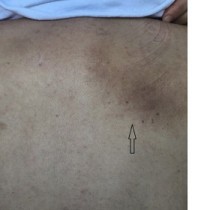 Notalgia paresthetica (NP) is a sensory neuropathy felt in the upper back with itching, pain, numbness, burning or other sensation, and sometimes with a circumscribed area of pigmentation. It is thought to be a relatively common but perhaps underdiagnosed condition. It can get worse from time to time and lasts for months to years. It was first described in 1934. The term notalgia is from notos (back) and algos (pain).
Notalgia paresthetica (NP) is a sensory neuropathy felt in the upper back with itching, pain, numbness, burning or other sensation, and sometimes with a circumscribed area of pigmentation. It is thought to be a relatively common but perhaps underdiagnosed condition. It can get worse from time to time and lasts for months to years. It was first described in 1934. The term notalgia is from notos (back) and algos (pain).
It is mostly seen in women 54 to 62 years and is usually one sided. The pigmentation may be secondary to scratching and rubbing the mid to upper portion of the back associated with T2 – T6 dermatomes. Muscle spasm can also be involved. Treatment consists of topical agents like lidocaine, drug treatments like gabapentin and amitriptyline, and therapy methods like TENS, cervical traction, exercise, and manipulation.
- According to a 2020 study in BMC Neurology, cervical degenerative changes and C6-7 disc herniation appear to be contributing factors. It may be from nerve entrapment in the muscles and/or spinal pathology. The authors indicate local lidocaine can be effective for pain relief and itching. The authors used superficial intradermal lidocaine injections to obtain relief for up to 3 months.

